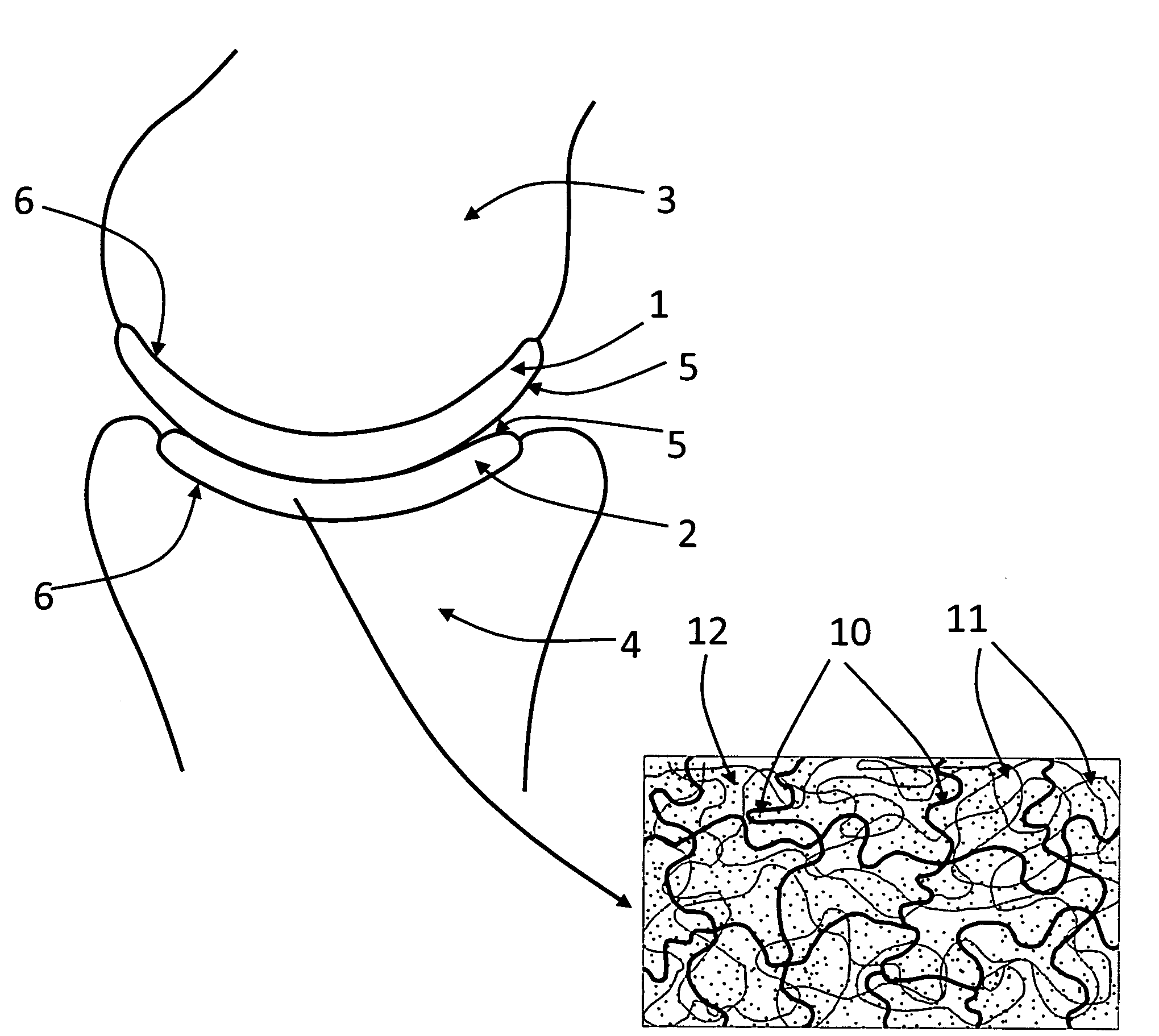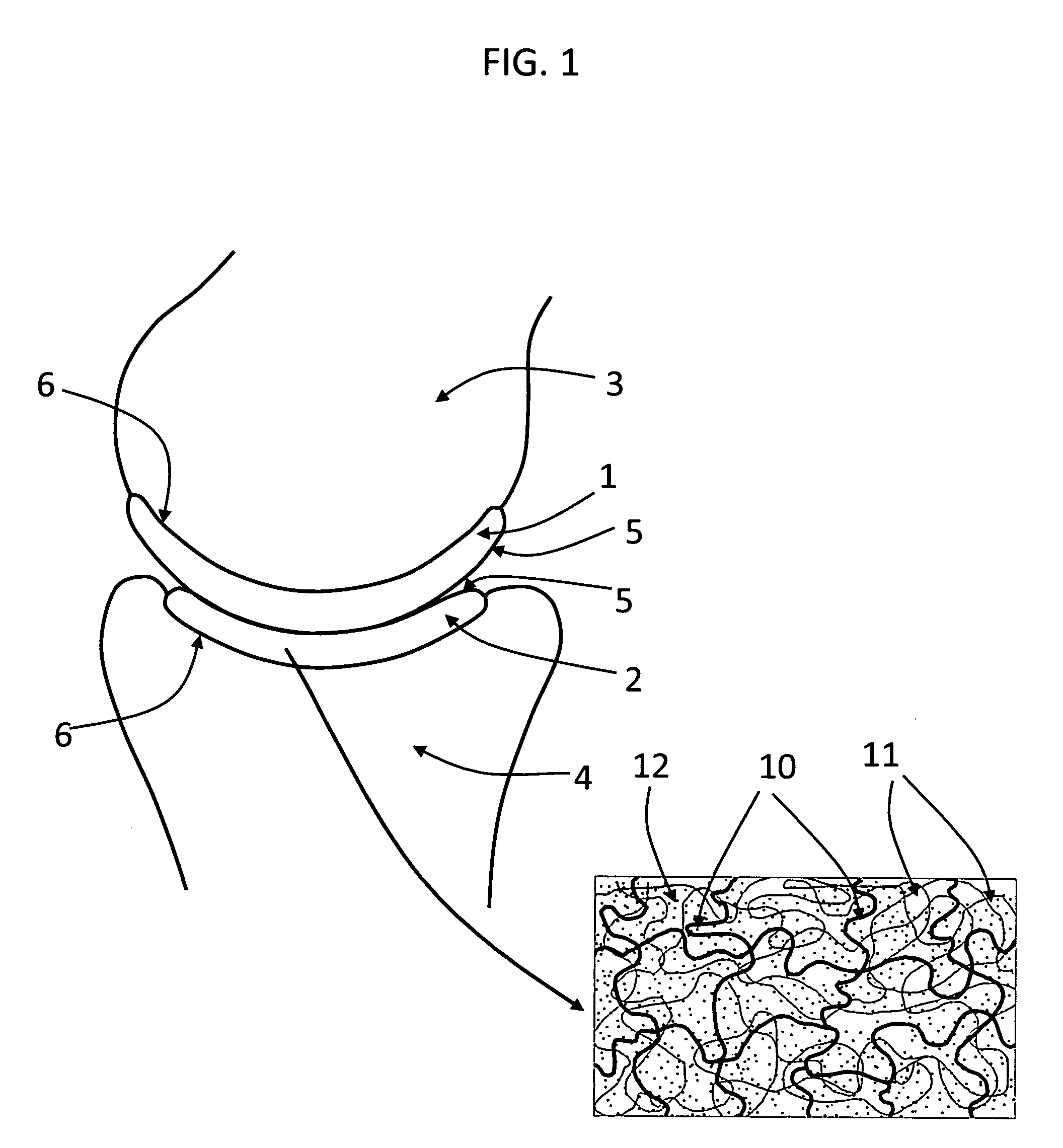Hydrogel arthroplasty device
a technology of arthroplasty and hydrogel, which is applied in the direction of femoral heads, prostheses, ligaments, etc., to achieve the effect of stimulating bone cell growth and/or adhesion
- Summary
- Abstract
- Description
- Claims
- Application Information
AI Technical Summary
Benefits of technology
Problems solved by technology
Method used
Image
Examples
examples
[0093]The following description refers to an exemplary embodiment of a strain-hardened interpenetrating polymer network hydrogel with PEG as a first network 10 polymer and PAA as a second network 11 polymer. The IPN hydrogel is synthesized by a (two-step) sequential network formation technique based on UV initiated free radical polymerization. A precursor solution for the first network is made of purified, telechelic PEG dissolved at a typical concentration of 50% w / v in phosphate buffered saline (PBS) solution, water, or an organic solvent with either 2-hydroxy-2-methyl-propiophenone or 2-hydroxy-1-[4-(2-hydroxyethoxy)phenyl]-2-methyl-1-propanone as the UV sensitive free radical initiator. The types of telechelic PEG macromonomers used were PEG-diacrylate, PEG-dimethacrylate, PEG-diacrylamide, and PEG-diallyl ether. In other embodiments, either network can be synthesized by free radical polymerization initiated by other means, such as thermal-initiation and other chemistries not in...
PUM
| Property | Measurement | Unit |
|---|---|---|
| Fraction | aaaaa | aaaaa |
| Fraction | aaaaa | aaaaa |
| Percent by mass | aaaaa | aaaaa |
Abstract
Description
Claims
Application Information
 Login to View More
Login to View More - R&D
- Intellectual Property
- Life Sciences
- Materials
- Tech Scout
- Unparalleled Data Quality
- Higher Quality Content
- 60% Fewer Hallucinations
Browse by: Latest US Patents, China's latest patents, Technical Efficacy Thesaurus, Application Domain, Technology Topic, Popular Technical Reports.
© 2025 PatSnap. All rights reserved.Legal|Privacy policy|Modern Slavery Act Transparency Statement|Sitemap|About US| Contact US: help@patsnap.com



